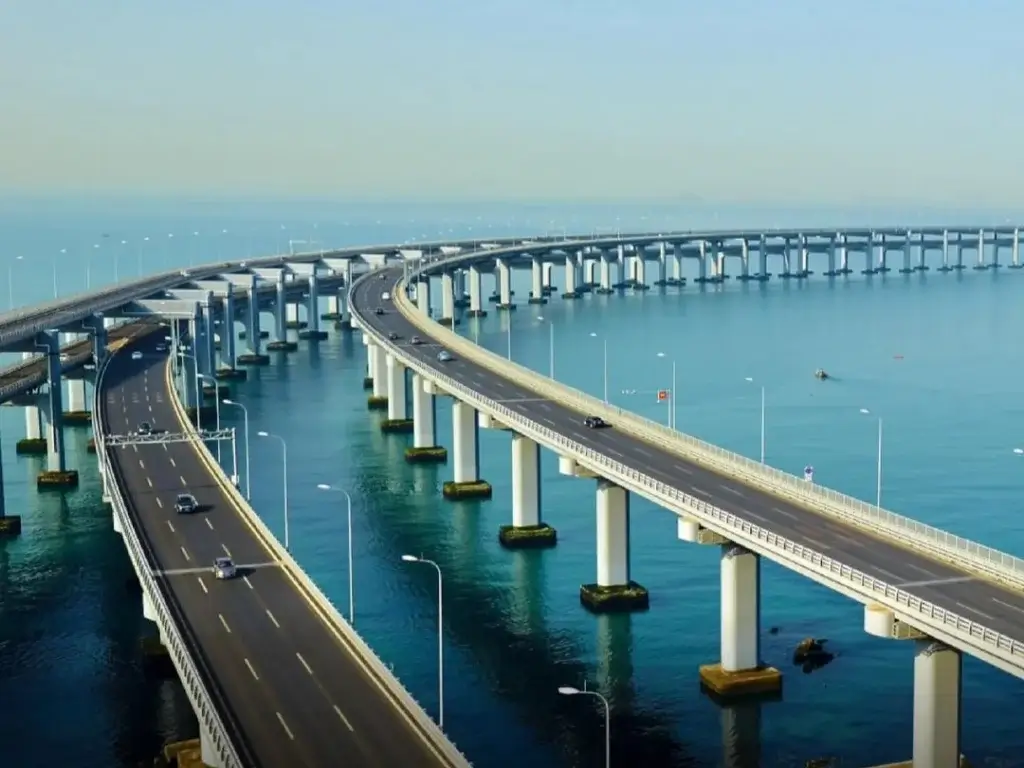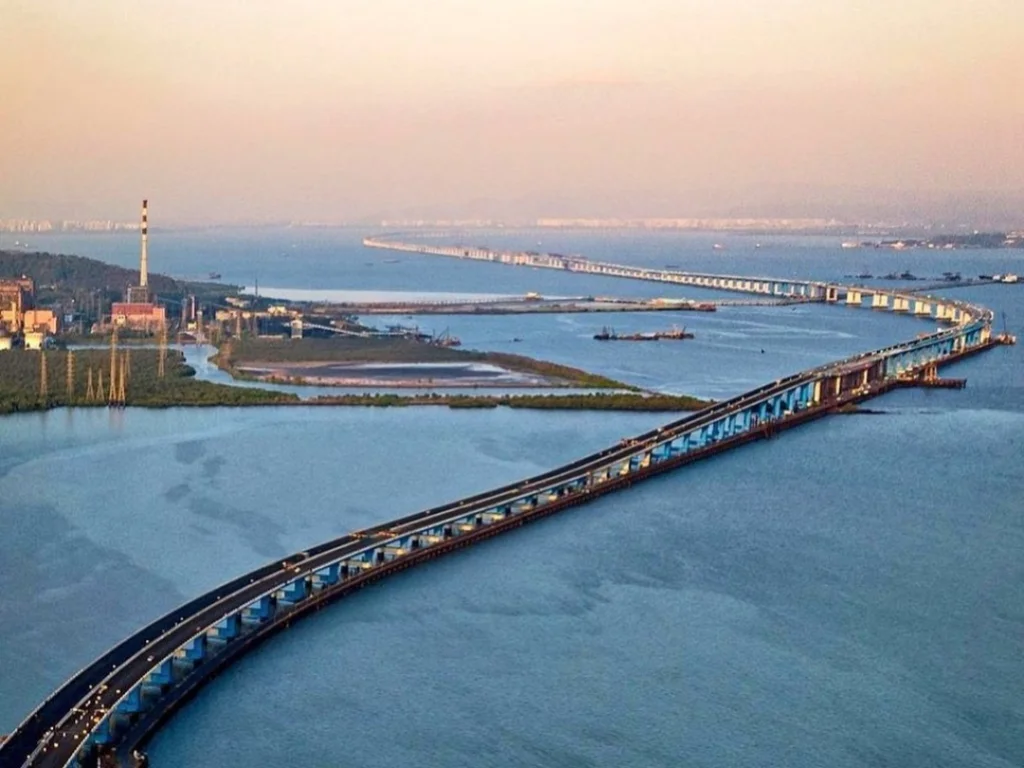The Mumbai Trans Harbour Link (MTHL), which Prime Minister Narendra Modi inaugurated on January 12, is the country’s longest sea bridge, a massive engineering wonder connecting Suri and Navasheva. The bridge, also known as Atal Setu, spans 22 kilometers and cost 18,000 crores to build. It spans 16.50 kilometers over the sea and 5.5 kilometers over land. This article dives into the MTHL’s numerous features, looking at how it affects travel, traffic, and the real estate market.
Connectivity and Speed Limits
The MTHL’s promise to transform transportation between Mumbai and Navi Mumbai is one of its most notable aspects. The bridge, which has a speed restriction of 100 kmph for four-wheelers, is expected to cut travel time from two hours to 20 minutes. To guarantee safety, however, various vehicle restrictions have been introduced, including the prohibition of autorickshaws, bikes, three-wheelers, and animal-drawn vehicles.

Project Genesis and Milestones
The MTHL project, which was envisaged in the 1990s to solve Mumbai’s increasing traffic congestion, gained traction after Prime Minister Modi laid the groundwork in 2016. The recent completion of construction, which includes a design that allows ships to pass beneath without being obstructed, represents a notable success in India’s infrastructure development.
Toll Structure and Concessions
During toll arguments, the state cabinet agreed on a toll of Rs 250 per car every voyage. In addition, the government has made concessions for frequent travelers, allowing return tickets for half the price of a one-way ticket. This strategic toll method seeks to balance revenue production with commuter convenience and cost-effectiveness.

Real Estate Implications
The MTHL has the potential to transform Mumbai’s real estate scene. Professionals seeking affordable luxury close to important business hubs are expected to drive an increase in demand for properties in places such as Panvel and Ulwe, according to industry analysts. Manju Yagnik, Vice Chairperson of Nahar Group, predicts exponential growth in these areas, cementing Mumbai’s reputation as a thriving real estate market.
Market Response and Expectations
Property prices in areas served by the MTHL, such as Panvel, Sewri, Navi Mumbai, and Chembur, are already rising. According to experts, the bridge would democratize the real estate market, transforming formerly undesirable neighborhoods into important nerve centers of Mumbai. Improved connectivity is likely to increase demand for both residential and business buildings.

Chembur: A Direct Beneficiary
Chembur has traditionally benefited from revolutionary infrastructure initiatives such as the Eastern Freeway, SCLR, and BKC Connector. Sundeep Jagasia, Managing Director of Shree Krishna Group, feels that the MTHL would transform the dynamics of Chembur even further, making it a more appealing destination for real estate investments.
Also Read : One Day in Munnar: A Whirlwind Adventure from Ernakulam
Finally, the Mumbai Trans Harbour Link heralds a new age in connectivity, revolutionizing transit between Mumbai and Navi Mumbai. With the potential to boost real estate expansion, the MTHL demonstrates India’s commitment to infrastructure development and urban change.
